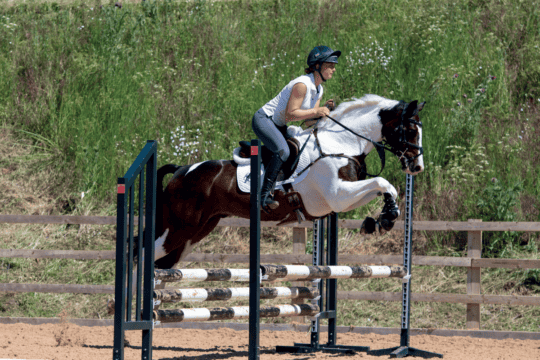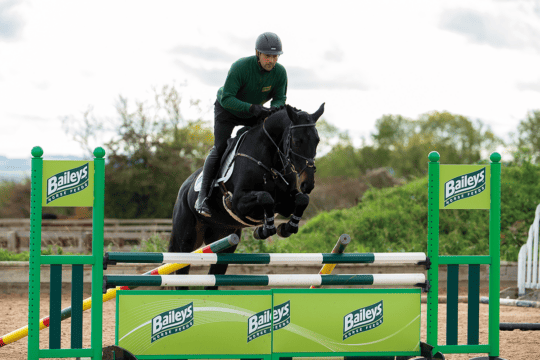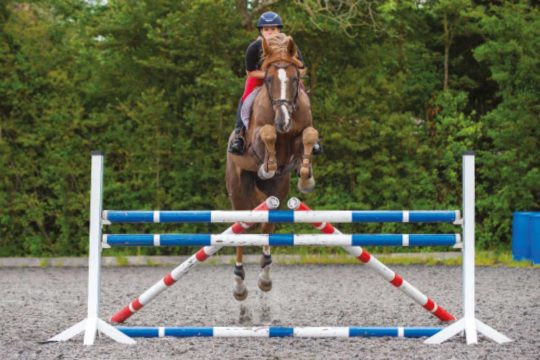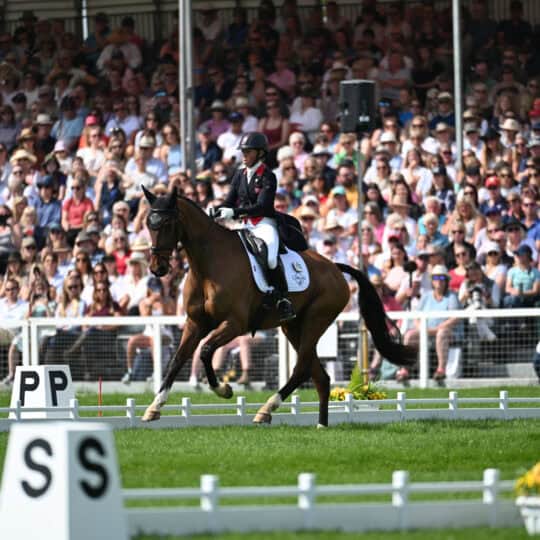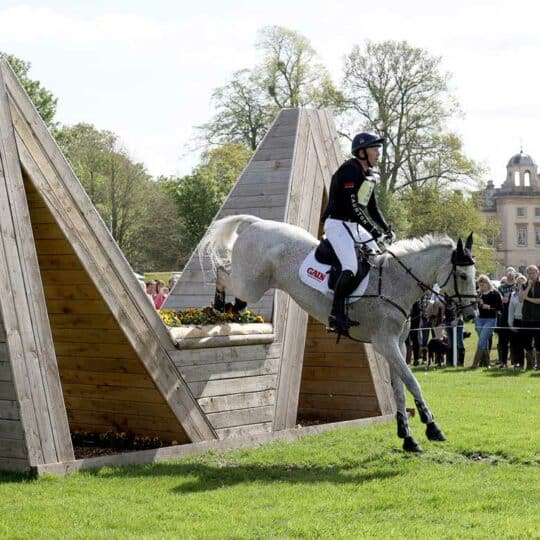-
Riding Schooling and Training
-
Health and Veterinary
-
Management
-
Mind Matters
-
Buying and Selling
-
Insurance Advice
FAQs
You’re ready to start introducing jumping, but where to begin? Clare Poole, top ex-racehorse producer, explains

Aside from being enjoyable, jumping opens up a whole new array of things you can do with your ex-racehorse, from a wider variety of showing classes, to showjumping and eventing. Even if your horse has raced over hurdles or as a steeplechaser, it doesn’t mean he’ll take to jumping like a duck to water – in fact, I find many flat racers actually find jumping easier to begin with than ex-racers who’ve jumped. You can approach the introduction to jumping in four logical steps, but don’t forget, when you’re working with horses you always need to be flexible and it might be that you occasionally need to go back a step or two, especially while your horse is gaining confidence.
Getting over the first hurdle
Before you begin to think about taking your horse over a fence, you need to introduce him to a single pole on the ground. Unless you’ve used poles in your flatwork (like the exercises I showed you in the last issue), it’s very unlikely that your ex-racer has ever come across one before. Therefore, you should introduce poles and jumping over a number of sessions, progressing to the next stage only when your horse is comfortable.
Top tip – Each time you set up a new task, approach it in walk first. Then, when your horse has relaxed, approach in trot. Be sure to ride it in both directions, too.
1. Lead him over a pole. At this stage it’s good to have an assistant to hold your horse on his other side to give him extra reassurance. By leading your horse over first, you can gauge his reaction without being on board. If he’s reluctant, let him follow a calm, confident horse over the pole. Once he’s relaxed, it’s a good time to introduce wings.
2. Once he’s walking over the pole in a relaxed manner, you can ride him over it. It’s up to you if you take the wings away to begin with. If you need to follow another horse or have someone walk alongside you to begin with, that’s okay.
3. When he’s confident with a single ground pole, put two more poles out at a trot distance (approximately 1.5m apart, depending on your horse’s stride) and ride over three in a row. It might take him a few goes to work out where to put his feet.
4. Once your horse is happy walking and trotting over the poles with the wings up, put up a small cross-pole – to begin with think of it as a raised pole size. Approach it in the same way as before and don’t worry about where he’s taking off, as he’ll soon work this out. When he’s got the hang of this, put it up to a straight bar. Don’t go over the fence every time you pass it. Work around it, too.
Top tip – Ride on a circle when introducing fences because it helps to keep your horse in a relaxed and steady rhythm rather than pointing and shooting.
Troubleshooting
With jumping, it’s a case of the more he does it, the more normal it will become and the more he’ll relax. However, there are a few problems you might encounter along the way when working with your horse, particularly if he’s an ex-racer…
overjumping – be prepared that your horse may take a bigger leap than he needed to at first, even over a ground pole. Stay relaxed and don’t worry if he overjumps, he’ll soon realise that he doesn’t need to put in so much effort each time
nervous – don’t be afraid to use your leg and keep it on positively. He’ll find your voice reassuring, too. Encourage him over, but let him work it out for himself and remember that if he knocks the poles, it’s not the end of the world
land and go – be prepared that he might land and accelerate. If he’s raced over fences before, he’ll have learnt to land and go, moving off quickly, but now you want him to learn to continue in the same rhythm, as if there was nothing there at all. Once you’ve gone over the poles or fence, return to the same pace and rhythm as soon as you can, but avoid pulling him up short so that he thinks he should stop after each fence. I find slipping my reins slightly helps because making them shorter means go faster to an ex-racer
Thinking to the future
Don’t expect a major improvement in his jumping to happen overnight, because racing is all your horse has ever known and he’s starting everything from scratch. Although it might not take you too long to get your horse over his first jump, it will take time, perhaps even a couple of years, before he really flourishes in his new career. Everything he does in this time will build on what he’s learning, and even the smaller parts of training really count and transfer to other situations – for example, riding between the poles as well as over them is good training for getting him used
to dressage boards. If you’re planning to take your horse to
shows, it’s a good idea to practise over natural fences as well as coloured showjumps, because you want to introduce him to these before he’s in the ring. Even if he’s just learning to stand in the field while you talk to your friend, this will help him later on in a line-up at a show or while he’s waiting around at a competition – every little counts on his way to success in his new career.
Top tip – Whenever your horse does something new or particularly well, let him know with a pat and praise so that he develops a positive association.
Web extra – Watch Clare progress through the stages of introducing jumping: bit.ly/Clare_Jumping




